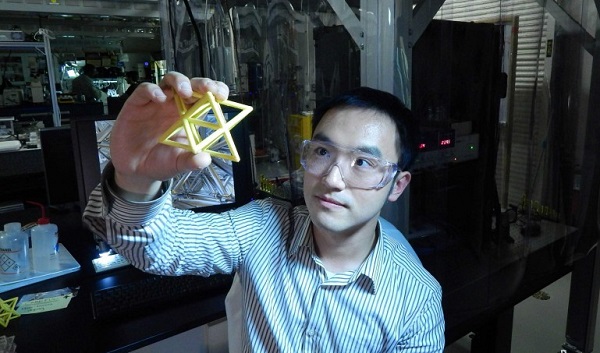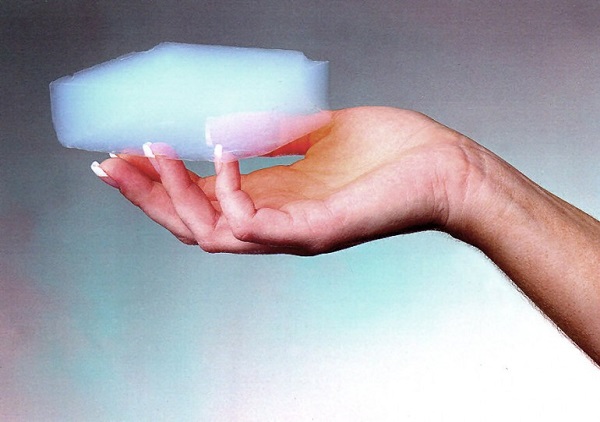Imagine a material so light it feels like air, yet strong enough to build airplanes or cars. Sounds like science fiction, right? But this could soon become reality! A team from MIT and Lawrence Livermore National Laboratory has developed an ultra-lightweight material that’s as light as aerogel but 10,000 times stronger. This breakthrough might revolutionize aerospace and automotive industries in the near future.

Lawrence Livermore engineer Yayne (Zheng Xiaoyu) is examining miniature models of crystal units that form this ultra-light, ultra-strong material.

LLNL research team and its sample microstructure.

"Aerogel," also known as "frozen smoke."
Aerogels are incredibly light—some weigh as little as 0.16 milligrams per square centimeter. They’re used for insulation, in sports equipment, and even to control oil spills. NASA has used them to protect samples collected from comet tails during the Stardust mission.
The new material created by MIT and LLNL isn’t an aerogel—it's a metamaterial. Though man-made, it draws inspiration from natural structures.
The researchers aimed to create something as light as aerogel, but far stronger. The key lies in its geometry, not the material itself. By designing specific shapes, they achieved incredible strength with minimal weight.
To make the material, they used “projection micro-stereolithography,†a type of 3D printing at the micro-level. This allows for rapid creation of complex 3D structures.
Although the process works on a tiny scale, it's similar to building trusses and beams. What’s impressive is that different materials can be used—polymers, metals, ceramics—all while maintaining the same structural design.
The team first created a metal film layer about 200–500 nanometers thick, then removed the polymer template to leave behind a hollow metal tube. Later, they replaced the metal with ceramic, producing a 50-nanometer-thick ceramic structure. Its density matches traditional aerogels, but its strength is four orders of magnitude greater.
They also developed a hybrid version—ceramic-polymer, where nano-ceramic particles were embedded into a polymer matrix. The process involved heating the polymer to leave a dense ceramic structure.
Yayne (Zheng Xiaoyu) said, “These lightweight materials can withstand at least 160,000 times their own weight.â€
In the near future, this technology could be applied to aircraft parts, car components, and space exploration. The final strength may be up to 100 times stronger than what was tested in the lab.
This groundbreaking research was published in the journal *Science*.
Bi Metal Hole Saw,Plastic Hole Saw,Cobalt Hole Saw,Pipe Hole Saw
Danyang Yongshun Tools Co.,Ltd , https://www.china-drill-bit.com